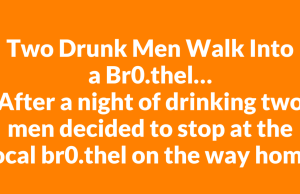Does your favorite sleep position reveal anything about your personality? Read on to find out.

Depending on who you ask, your Myers Briggs type, astrological sign, and Enneagram number can give you deeper insight into the kind of person you are. But ask a scientist what your sleep position says about your personality, and the short answer is: Not much.
Just so we’re clear, “sleep affects every aspect of our functioning, both physical and psychological,” says Terry Cralle, RN, a sleep educator, author, and advisor with the Better Sleep Council (BSC).
“The better we sleep,” she says, “the better we are in so many ways. We’re more motivated. We’re better in relationships. We perform tasks, communicate, and handle stress better. And we’re less reckless and less likely to get into accidents. So on some level, how we sleep does impact our behavioral tendencies.”
The truth is, we change positions in our sleep as much as ten to 30 times a night! And many factors are entirely external, like how comfortable our mattress is and how our bed partner sleeps. Even though some researchers have linked sleep positions to overall personality types—the most widely cited analysis was based on a survey of 1,000 participants in the UK—ultimately, “the science is lacking on the relationship between personality and sleep positions,” Cralle says, “but not on healthy sleep positions.”
So while the sleep position personality test doesn’t exist, we break down the six most common sleeping styles, the often-associated traits, and what the research really says.
Sleep Position: The Freefaller
You lie on your stomach with your hands up by your pillow and your head turned to the side, like a skydiver. This position, also known as the prone position, seems to be more common with Gen Xers and millennials, according to recent research by the BSC.
Personality traits:
Some say freefallers don’t take criticism well and tend to be brash, bold, and outspoken in nature.
Sleep Position: The Fetal Position
You lie on your side with your knees bent towards your chest, curled up like a baby. This is the most common sleeping position among Americans (47%)—and it’s more common with women than men.
Personality traits:
Sensitive at heart, people who report sleeping in the fetal position may show traits of shyness and introversion.
Sleep Position: The Yearner
You lie on your side with both arms stretched out in front of you. Boomers are more likely to sleep this way than millennials and Gen Xers.
Personality traits:
Open-minded, complex, and cynical. Some sources say yearners can be slow in making decisions but are resolute once their mind’s made up.
Sleep Position: The Log
You lie on your side with both arms straight down. If that sounds uncomfy, the stats would agree: Only about 6% of Americans report sleeping like a log.
Personality traits:
Easy going, social, and trusting of others. Log sleepers are also more likely to consider themselves to be healthy.
Sleep Position: The Soldier
You lie on your back with both arms down by your sides. It’s another not-so-popular position with only 11% of Americans preferring to sleep this way, although sleep lab studies show that most people (over 62%) actually start out laying on their backs, before ending up in other positions.
Personality traits:
Quiet and reserved. Soldiers may hold both themselves and other people to high standards.
Sleep Position: The Starfish
You lie on your back with both arms up by your pillow. Men are more likely to sleep in the Starfish position than women.
Personality traits:
Starfish sleepers tend to be selfless, giving people, always ready to lend a helping hand or listening ear.
So What’s The Best Position For Sleeping?
Keep in mind, the above descriptions are just hints and interpretations, not hard-and-fast personality diagnoses. The most important thing is knowing what healthy sleep looks and feels like.
Cralle says that side sleeping is considered a healthy position for most people, especially snorers, those with mild sleep apnea, and neck and back pain. Positioning yourself on your side (or even your stomach) can help keep your airways open and reduce snoring.
Sleeping on your left side in particular may help alleviate heartburn and acid reflux symptoms, promote digestion, and support lymphatic drainage, Cralle points out. The American Pregnancy Association also recommends a left-side sleeping position for pregnant women. Here’s a tip: A supportive (but not too thick!) pillow underneath your head and between your knees and thighs can help keep your spine, hips, and pelvis in alignment.
Which Sleep Position Is The Worst?
On the other hand, sleeping on your back can affect the flow of oxygen to the body, which “can aggravate snoring and lead to more frequent episodes of apnea,” says Cralle. If sleeping on your back is a comfortable position for you, Cralle suggests placing a pillow behind your knees to help support your spine and reduce pressure that could lead to back pain.
“Generally, I consider stomach sleeping to be the worst of all options, with occasional exceptions,” says Cralle. “Stomach sleeping can help reduce snoring and sleep apnea, so it may be a smart choice for people with mild versions of these conditions who can’t get comfortable sleeping on their sides.” But as someone with a handful of stomach sleepers as patients, Cralle says this position is a recipe for unnecessary neck pain and strain. Sleeping prone makes it difficult to maintain a neutral spine, which can hard on your back and neck. But if you must, try sleeping with a thin pillow—or none at all.
It ultimately comes down to what feels good for you and that you’re waking up feeling rested and restored. “Just ask yourself, am I really as comfortable as I can be every night? Is my bed supportive enough for easy position changes? Sleep position is important,” Cralle says, “but it’s not rocket science!”




















